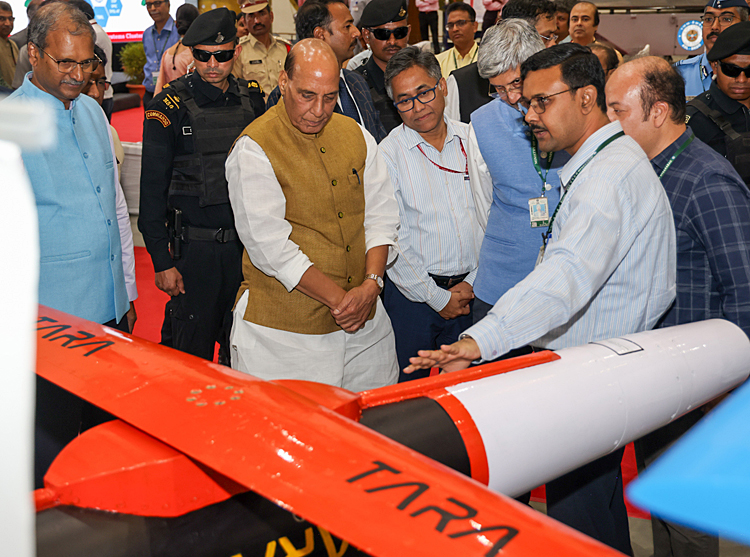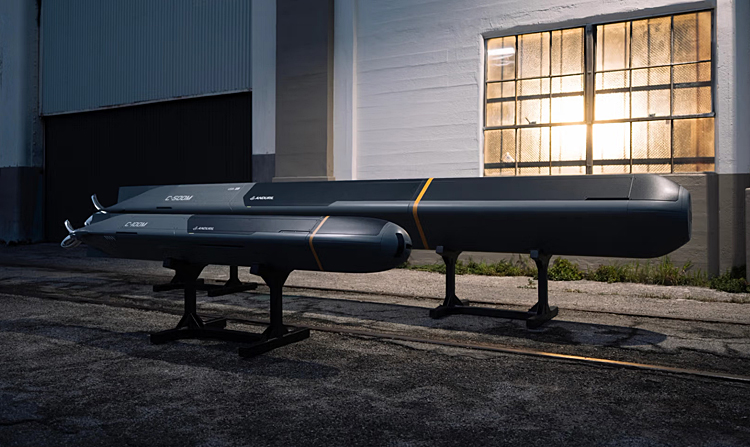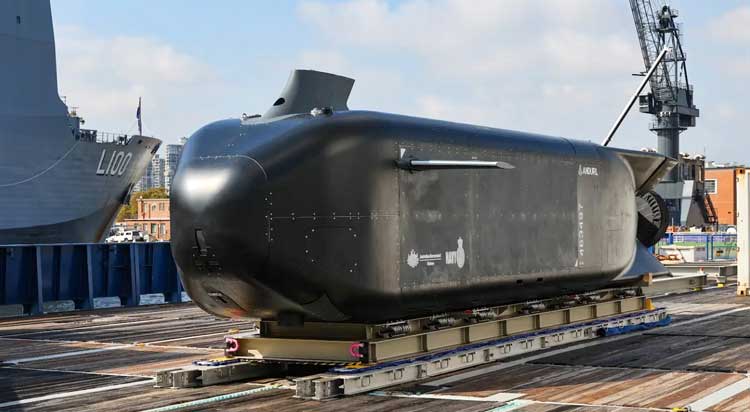INDIAN ARMED FORCES CHIEFS ON OUR RELENTLESS AND FOCUSED PUBLISHING EFFORTS

The insightful articles, inspiring narrations and analytical perspectives presented by the Editorial Team, establish an alluring connect with the reader. My compliments and best wishes to SP Guide Publications.

"Over the past 60 years, the growth of SP Guide Publications has mirrored the rising stature of Indian Navy. Its well-researched and informative magazines on Defence and Aerospace sector have served to shape an educated opinion of our military personnel, policy makers and the public alike. I wish SP's Publication team continued success, fair winds and following seas in all future endeavour!"

Since, its inception in 1964, SP Guide Publications has consistently demonstrated commitment to high-quality journalism in the aerospace and defence sectors, earning a well-deserved reputation as Asia's largest media house in this domain. I wish SP Guide Publications continued success in its pursuit of excellence.
- Global Partners Urged to Tap India's Shipbuilding Potential: Rajnath Singh at Samudra Utkarsh
- All about HAMMER Smart Precision Guided Weapon in India — “BEL-Safran Collaboration”
- India, Germany deepen defence ties as High Defence Committee charts ambitious plan
- G20 Summit: A Sign of Global Fracture
- True strategic autonomy will come only when our code is as indigenous as our hardware: Rajnath Singh
- India–Israel Joint Working Group Meeting on defence cooperation to boost technology sharing and co-development
Glide Bombs, Torpedoes & UW Swarms
Indigenous developments by the Defence Research and Development Organisation (DRDO) and advancements through latest weapon technologies from US and China continues to push the boundaries of multi-domain future warfare
 |
The Author is Former Director General of Information Systems and A Special Forces Veteran, Indian Army |

The indigenous Tactical Advanced Range Augmentation (TARA) system, developed by the Defence Research and Development Organisation (DRDO), is an engine-free glide bomb that combines guidance technology with aerodynamic design to deliver stand-off range and precision. Tara comes in multiple weight variants, dual-mode guidance systems with exceptional accuracy rates, and compatibility with existing Indian Air Force (IAF) platforms. According to news reports of April 2, 2025, Tara is currently undergoing testing with Jaguar aircraft. TARA has been developed in three variants (250, 450 and 500 kg) to suit different targets and mission parameters of the IAF.
TARA incorporates existing bomb casings from General Purpose (GP) and High-Speed Low Drag (HSLD) bombs in the DRDO's inventory. TARA is being integrated with IAFs Jaguar, Mirage 2000, and Sukhoi Su-30 MKI aircraft. TARA features aerodynamic profiles to reduce air resistance, enabling greater range and enhanced effectiveness against targets. The complete TARA unit, including its guidance kit length of 1.90 meters, while the housing warhead weights ranging from 110 kg to 170kg (±5kg) depending on the variant.
The flexibility in guidance modes gives TARA significant operational versatility, allowing mission planners to select the appropriate engagement profile based on target characteristics, defensive systems, and environmental conditions
Operating at altitudes ranging from 10 km high to 150 meters low, TARA can be tailored to mission requirements depending on the threat. The control system enables complex terminal manoeuvers, allowing it to approach targets from optimal angles to maximize effectiveness while evading enemy air defences. The multi-tiered guidance of Tara system ensures accuracy throughout its flight. During the mid-course trajectory, the weapon relies on a fiber-optic gyro inertial navigation system (INS) working in conjunction with GPS satellite guidance.
The system has a Circular Error Probable (CEP) of about 30 meters. However, in the final attack phase, TARA can transition to a Semi-Active Laser (SAL) seeker mode, following a laser designation pointed at the target by either the launching aircraft or forward observers on the ground; dramatically improving the final accuracy to about 3 meters CEP, enabling precision strikes against specific structural weaknesses or high-value components within larger target complexes. The flexibility in guidance modes gives TARA significant operational versatility, allowing mission planners to select the appropriate engagement profile based on target characteristics, defensive systems, and environmental conditions.
TARA represents a significant achievement in India's ongoing efforts to develop indigenous defence technologies and reduce dependence on foreign suppliers
TARA's speed envelope of 640-1,200 km/h provides tactical flexibility; rapid target engagement when necessary or more measured approaches when stealth is prioritized. Exact operational range of TARA is classified, however, it is comparable to international systems achieving stand-off distances of 50-70 km, depending on release altitude and speed. TARA represents a significant achievement in India's ongoing efforts to develop indigenous defence technologies and reduce dependence on foreign suppliers.
Between April 8-10, 2925, the indigenous 'Gaurav' glide bomb was successfully tried from a Su-30MKI fighter aircraft. Gaurav is a 1,000 kg long-range glide bomb (LRGB) that combines advanced GPS-guidance and has a 100-km range. During the successful trials, Gaurav demonstrated pinpoint accuracy. The development of Gaurav involved DRDO's Research Centre Imarat, Armament Research and Development Establishment (ARDE) plus industry partners like Adani Defence and Bharat Forge. The project also saw participation of multiple MSMEs.

Launched typically from above 40,000 feet, Gaurav leverages a hybrid navigation system combining GPS and Inertial Navigation System (INS) to ensure accuracy in contested environments where signals may be jammed. Moreover, the versatility of Gaurav is enhanced by multiple warhead configuration, which includes pre-fragmented and penetration-blast option, making Gaurav adaptable to diverse missions.
The 1000 kg Gaurav falls in the category of America's Joint Direct Attack Munition-Extended Range (JADM-ER) and Israel's SPICE-200. The Gaurav LRGB will significantlly enhance the IAF's operational prifile, espectially since it also offers a cost-effective alternative compared to expensive missiles while offering the same lethality.
The Gaurav LRGB will significantly enhance the IAF's operational profile, especially since it also offers a cost-effective alternative compared to expensive missiles while offering the same lethality
Advancements in developments of torpedos have the potential of revolutionalizing warfare. According to news reports of April 7, 2025, US engineers have developed the world's first drone-fired torpedo that hits 30+ knots underwater. In a development that could redefine autonomous undersea operations, dominance, America's Anduril Technologies has developed a new family of torpedoes, called 'Copperhead-M', which underwater drones can launch. Copperhead-M is a munition variant that arms autonomous vehicles with affordable and mass-producible torpedo-like capabilities. According to Anduril, Copperhead-M is the first high-speed, software-defined family of torpedoes built to be carried by underwater autonomous systems.

Anduril said in a press release on April 7 that the US Navy requires a large fleet of autonomous subsea, surface, and air vehicles capable of bringing advanced awareness and overwhelming adversaries with mass maritime effects to ensure victory at sea. The statement further said, "Copperhead enables a comprehensive, intelligent maritime capability that allows operators to quickly respond to threats in the undersea battlespace, at a fraction of the cost of legacy options."
Despite advances in autonomous underwater vehicles, torpedoes are not being mass produced and current systems are expensive, slow to produce, and are coupled with legacy platforms like nuclear submarines and warships. Development of Copperhead-M changed all this with a revolution in military affairs (RMA) in subsea operations. Copperhead-M can integrate with larger UUVs, offering both offensive and utility roles. Unlike legacy torpedoes, Copperheads are recoverable and reusable, allowing refurbishment after a miss.
Copperhead-M is a munition variant that arms autonomous vehicles with affordable and mass-producible torpedo-like capabilities
Copperhead-M variants launch from the Ghost Shark (Dive-XL), already operated by the Royal Australian Navy. A single Dive-XL can carry dozens of Copperhead-100s or multiple Copperhead-500s for strikes against submarines or warships. Interestingly, Anduril also envisions air launches from cargo planes like the C-130 or large UAVs. As a cost-effective alternative the Copperhead-M offers stiff competition to the billion-dollar submarines, especially since the Copperhead-M swims faster than submarines at 30 plus knots. India needs to develop a similar capability.

China's Northwestern Polytechnical University has developed underwater drone swarms; a revolutionary technology designed to neutralize aircraft carriers in future conflicts. This Carrier Killer, firing 6000 rounds per minute, with seven units controlled by state-of-the-art guidance systems and radar, has raised speculation that in future wars, aircraft carriers will be effective only against weak nations. Another view is that this may not be effective enough against the overall defences of the 'Carrier Group', especially since reports suggest that the submarine has to surface to launch these underwater swarms. Underwater drones are also prone to electronic warfare; cybersecurity and signal integrity being their soft spots in a contested environment. The next advancement by China and other nations could be the launch of underwater swarm drones without the need for the submarine to surface. India needs to take note of these developments.





